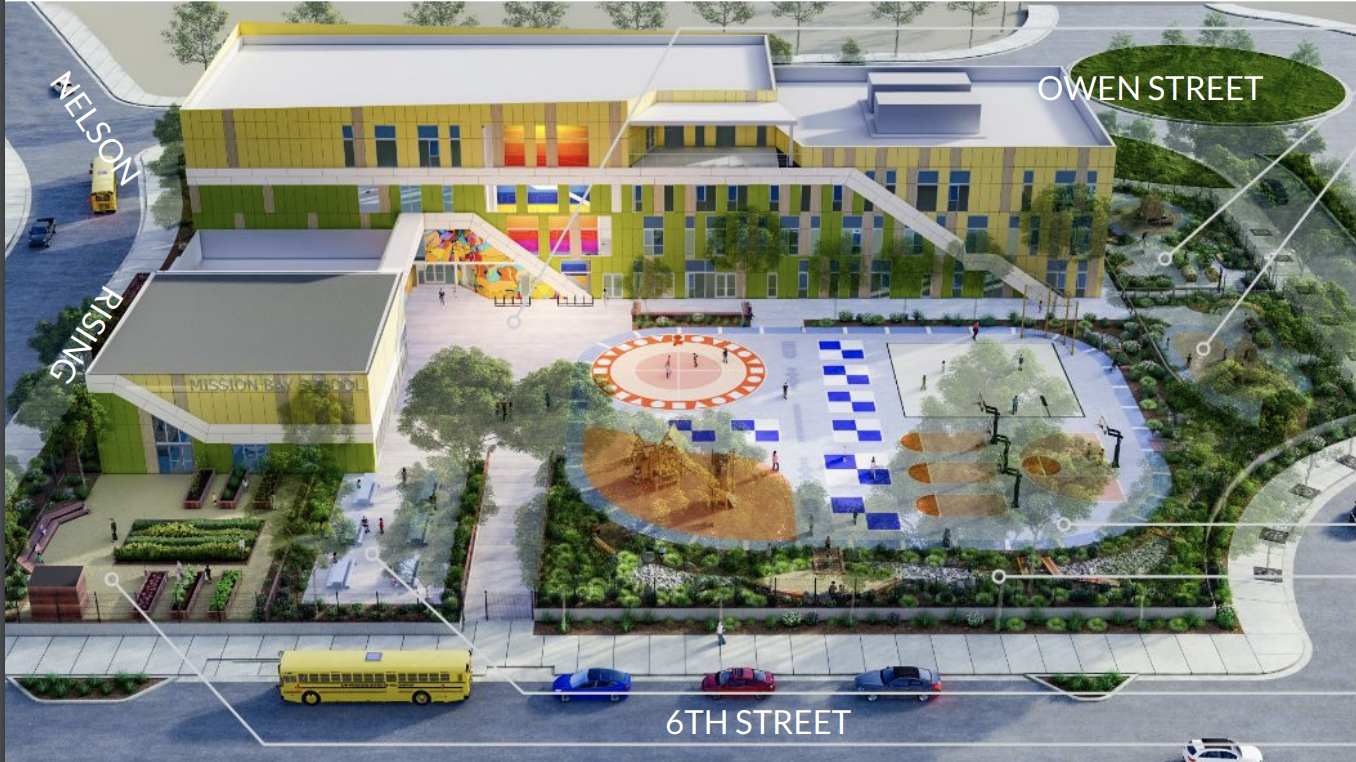Since the pandemic exacerbated San Francisco Unified School District’s declining enrollment and structural deficit, some questioned: Should the district build a new school in Mission Bay?
The school, a decade in the making, would serve about 550 students in Pre-Kindergarten through fifth grade with a dedicated space for professional development, a linked learning hub focused on STEM for the district’s high school students and more. It would replace a parking lot, a gift from the University of California, San Francisco between Owens and Sixth streets.
On Wednesday, the San Francisco Board of Education ultimately granted key approvals to propel the project forward. The vote to approve construction contracts, land transfer requirements and environmental impact report was unanimous, according to Vice President Kevine Boggess. (Due to unforeseen technical issues, The Standard was unable to hear audio for remote viewing.)
The school is slated to open in August 2025 and estimated to cost over $115 million. Its operating costs are not yet known.
It comes as the district is on the cusp of balancing a $125 million deficit for the upcoming school year, with ongoing deficits expected as enrollment declines.
But 30% of the housing built in Mission Bay is below market rate, which tends to house high percentages of families—in particular, families who typically enroll their children in public schools. SFUSD expects 700 students in Mission Bay when all anticipated housing in the neighborhood is developed.
At the same time, the district is developing a new student-assignment system that narrows school options based partly on proximity, in order to address school segregation and frustration over the process, including long commutes. This would constrain capacity at the few schools in nearby SoMa.
“That long-term view is important,” said Dawn Kamalanathan, SFUSD’s head facilities officer, during a committee meeting last month.
As of the past school year, SFUSD estimated that 542 of its students live in Mission Bay, including 302 in elementary school. Of those, Latinx students make up 29%, Chinese students make up 22%, Black students make up 11% and Middle Eastern/Arab students make up 7%.
Boggess, one of those who has asked staff to articulate why the project kept moving forward, is “really suspicious” about the Planning Department’s prediction of a population boom. But he likes the idea of schools being closer to students and a modern-day school serving as a beacon for SFUSD schools, enticing more families to enroll.
“We need to increase our assets and maximize our benefit for the city,” Boggess said. “The struggle is if you have too many schools and not enough students, you create a dynamic where … you’re stretched so thin with the facilities.”
Throughout the uncertainty for the distinct, demand for the school by families in the area has remained high.
“The immediate area is growing quickly,” said Gloria Li, a parent who sits on the Transbay Joint Powers Authority Citizens Advisory Committee, during a committee meeting last month. “Kids should not have to travel across the city for an education, and it should be in their community.”
